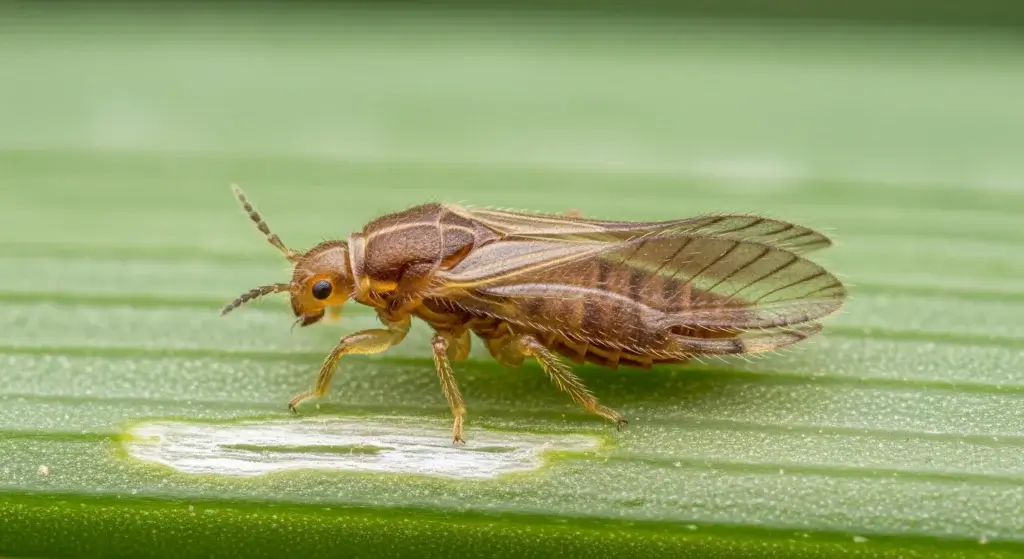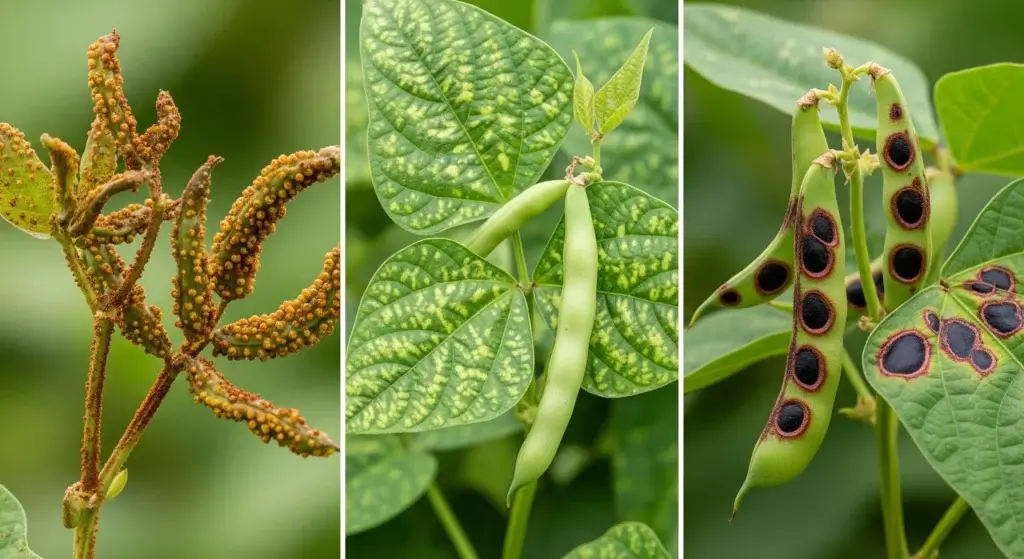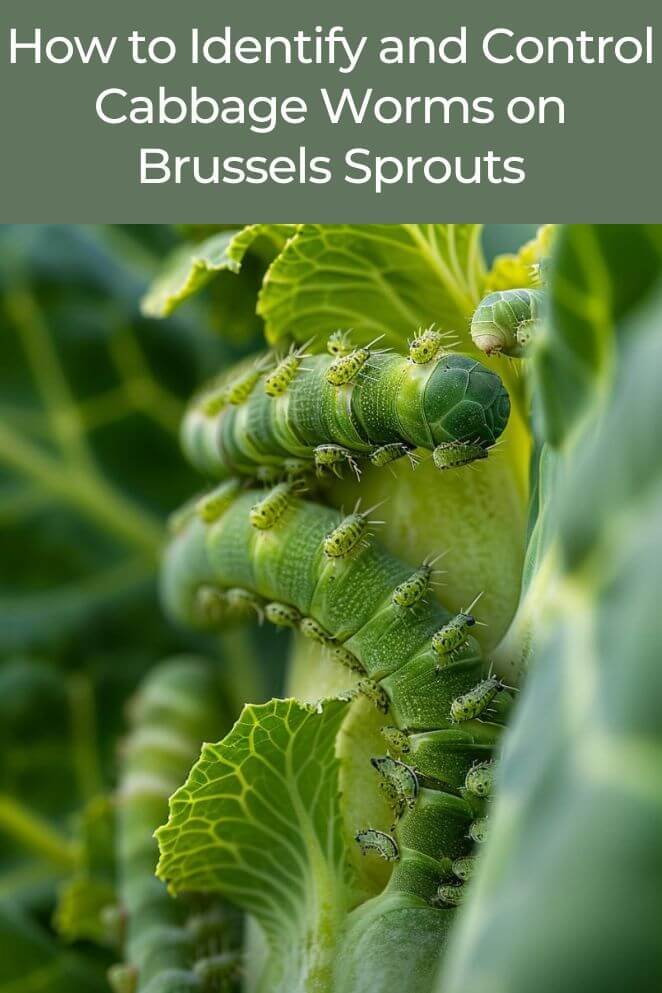
Brussels sprouts are a nutritious and delicious addition to any garden, but they can often fall victim to a notorious pest: the cabbage worm.
These pesky larvae can cause significant damage to your plants if left unchecked.
In this guide, we’ll cover how to identify cabbage worms on Brussels sprouts, methods to protect your plants, and natural and cultural practices to keep your garden healthy and productive.
Signs of a Cabbage Worm on Brussels Sprouts
Detecting cabbage worms early is essential to protect your Brussels sprouts from damage.
Here are the key signs to watch for:
Holes in leaves
Cabbage worms feed on Brussels sprout leaves, leaving behind irregular holes.
These holes can range from small to large and are a clear indication of cabbage worm activity.
Check both the upper and lower sides of leaves for these distinctive holes.
- Read also: Protecting Your Brassicas: How to Prevent Cabbage Worms
- Read also: A Comprehensive Guide: How To Grow Brussels Sprouts
Frass (caterpillar droppings)
Look for tiny pellets of green or brown droppings on the leaves and near the base of your Brussels sprout plants.
This frass is the waste produced by cabbage worms and serves as another telltale sign of their presence.
Finding frass indicates that cabbage worms are feeding on your plants.
Silk threads
Cabbage worms create fine silk threads as they move across the plant.
These threads may be visible on the undersides of leaves and can help you identify their movement and location on the plant.
While not always present, silk threads can be an additional clue to the presence of cabbage worms.
Larvae and eeggs
Cabbage worms start as small, green caterpillars that blend in with the foliage of Brussels sprouts.
They can be difficult to spot due to their color and size, so carefully inspect the undersides of leaves where they often hide.
Look for clusters of yellow or white eggs, which are laid by adult cabbage butterflies and indicate future cabbage worm infestations if not removed promptly.
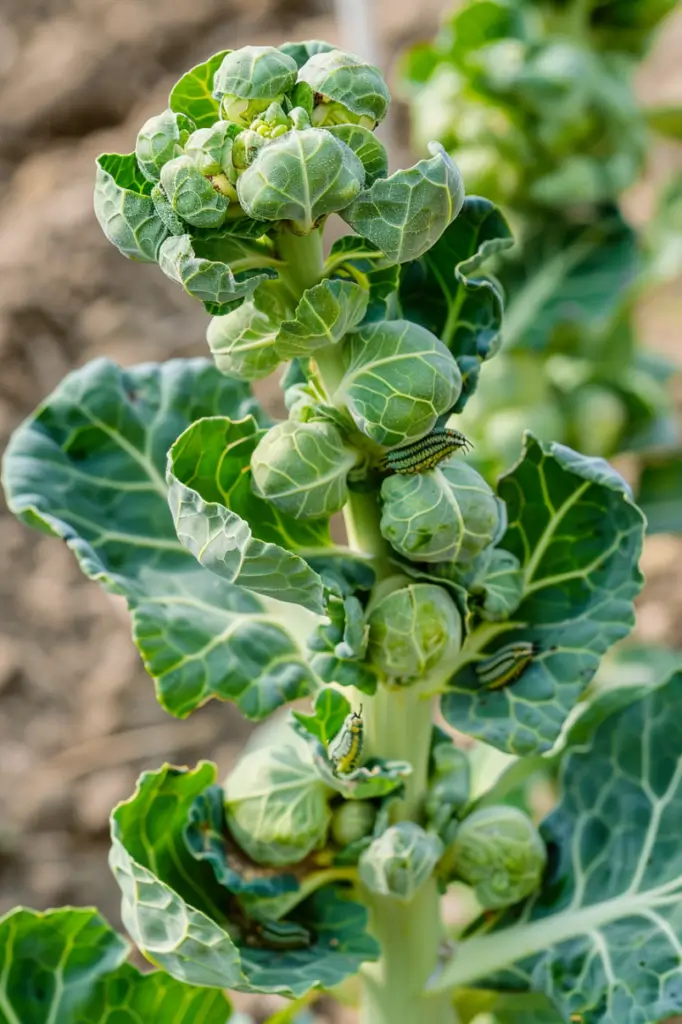
Protecting Your Brussels Sprouts from Cabbage Worms
Preventing cabbage worm infestations requires proactive steps and careful monitoring.
Here’s how you can effectively protect your Brussels sprouts:
Regular inspections
Inspect your Brussels sprout plants frequently, especially during the growing season when cabbage worms are most active.
Look for signs such as holes in leaves, caterpillars, eggs, or frass (caterpillar droppings).
Early detection helps you address the issue before it becomes severe.
Handpicking
If you find cabbage worms on your plants, remove them by hand.
Simply pick them off and drop them into a bucket of soapy water to kill them.
This method works well for small gardens and is an environmentally friendly way to control pests without using chemicals.
Floating row covers
Use floating row covers as a physical barrier to protect your Brussels sprouts from adult cabbage butterflies that lay eggs.
These covers are lightweight and allow sunlight, air, and water to reach the plants while keeping pests out.
Secure the edges of the row covers to the ground to prevent butterflies from accessing the plants and laying eggs.
Natural Control Methods
To manage cabbage worms in an eco-friendly way that preserves beneficial insects and protects the environment, consider these natural control methods:
Beneficial insects
Encourage beneficial insects like parasitic wasps, ladybugs, and lacewings in your garden.
These insects prey on cabbage worms and their eggs, naturally reducing their population.
Planting flowers such as dill, fennel, and alyssum can attract these helpful insects and provide them with a habitat.
Neem oil
Neem oil is a natural pesticide derived from the seeds of the neem tree.
It disrupts the growth and feeding of cabbage worms without harming beneficial insects.
Dilute and apply neem oil spray to your Brussels sprouts according to the product instructions.
Focus on spraying the foliage, including the undersides of leaves where cabbage worms typically hide.
Bacillus thuringiensis (Bt)
Bacillus thuringiensis, often abbreviated as Bt, is a soil bacterium that naturally produces toxins harmful to caterpillars like cabbage worms.
Bt is available in spray form and targets specific pests while being harmless to humans, pets, and beneficial insects.
Apply Bt spray to your plants, especially on the undersides of leaves where cabbage worms are likely to be feeding.
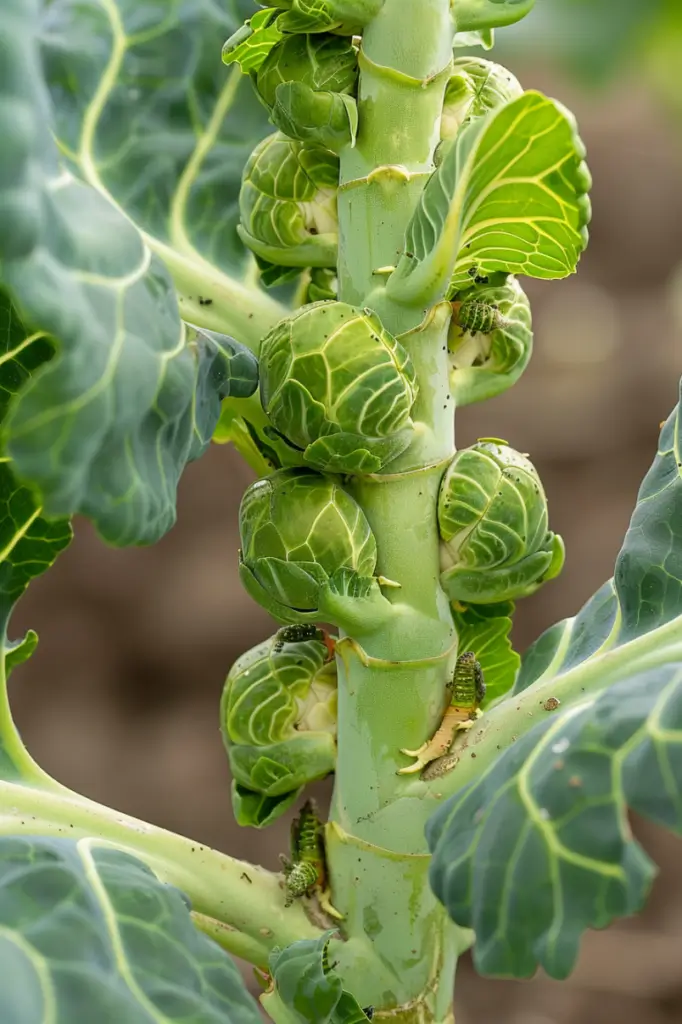
Cultural Practices
Implementing good cultural practices in your garden not only helps prevent cabbage worm infestations but also promotes overall plant health.
Here are effective strategies to consider:
Crop rotation
Rotate your crops annually to avoid planting Brussels sprouts or other brassicas in the same soil for consecutive years.
Cabbage worms and other pests can build up in the soil over time, so rotating crops helps disrupt their life cycle and reduces the risk of infestations.
Wait at least three years before planting brassicas in the same spot again.
Healthy soil
Maintain healthy soil by enriching it with organic matter like compost and well-rotted manure.
Healthy soil supports robust plant growth and improves plant resilience against pests and diseases.
When plants are strong and vigorous, they are better able to withstand cabbage worm attacks and recover more quickly from any damage.
Intercropping
Plant Brussels sprouts alongside other crops that naturally deter cabbage worms, such as tomatoes, onions, and herbs like thyme.
Intercropping creates a diverse garden environment that confuses pests with different scents and appearances.
This can make it harder for cabbage worms to locate and infest your Brussels sprouts, reducing the likelihood of widespread damage.
Additional Tips
In addition to cultural practices, here are a few more tips to safeguard your Brussels sprouts from cabbage worms:
Watering practices
Water your Brussels sprouts at the base of the plant rather than overhead.
This method reduces humidity around the leaves, which can create a less favorable environment for cabbage worms.
Damp conditions can encourage fungal diseases and make plants more susceptible to pest infestations.
Clean garden debris
Regularly clean up plant debris, fallen leaves, and any garden litter.
These materials can harbor cabbage worms and their eggs, providing hiding places and breeding grounds.
Removing debris reduces the likelihood of pests establishing themselves and helps maintain a clean and tidy garden environment.
Use diatomaceous earth
Apply food-grade diatomaceous earth around the base of your Brussels sprout plants.
Diatomaceous earth is a natural powder made from fossilized remains of diatoms, which are microscopic algae.
It works by physically abrading the bodies of soft-bodied insects like cabbage worms, causing them to dehydrate and die.
Be sure to reapply after rain or watering as it becomes ineffective when wet.

- Read also: Cabbage Aphid Control: Effective Strategies for a Healthy Garden
- Read also: Say No to Slugs! Strategies For Controlling Cabbage Pests
Conclusion
Cabbage worms can pose a serious threat to your Brussels sprouts, but with the right strategies, you can protect your plants and enjoy a healthy harvest.
Regular inspections, natural control methods, and good cultural practices are all essential components of an effective pest management plan.
By staying vigilant and proactive, you can keep your garden thriving and cabbage worm-free.

